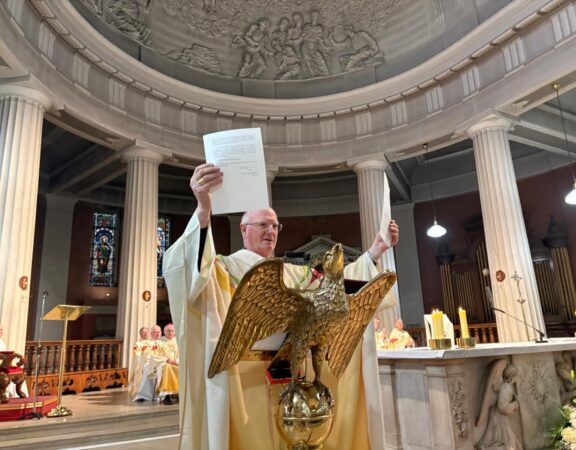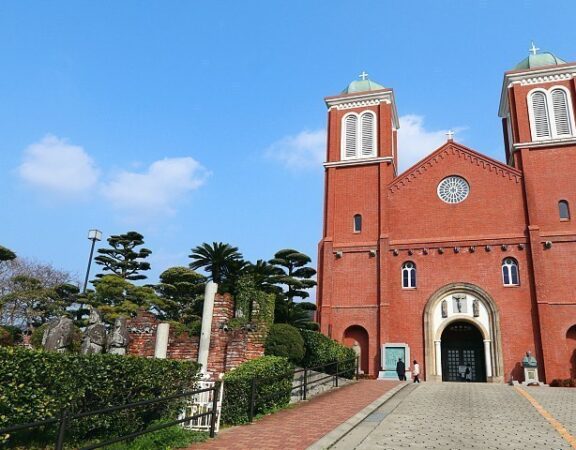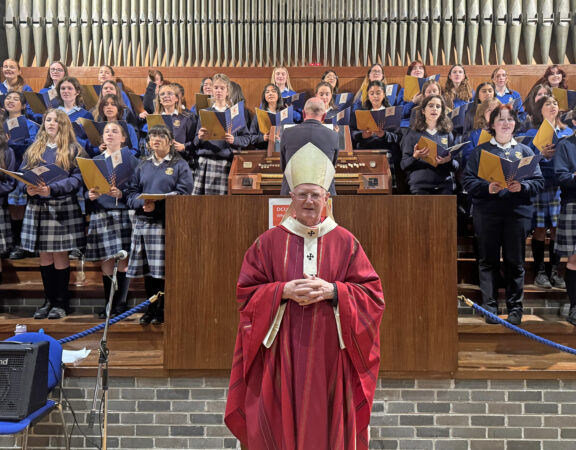50TH ANNIVERSARY OF THE NATIONAL REHABILITATION HOSPITAL
Homily Notes of
Most Rev. Diarmuid Martin
Archbishop of Dublin, Primate of Ireland
—————-
National Rehabilitation Hospital, 11th February 2011
We look back over fifty years of history, to the time in which this Hospital was opened, under the name of Our Lady of Lourdes Hospital. We look back over 50 years of care and medical excellence. We look back over a history in which tears were turned into hope and then into smiles and a new sense of purpose.
Very often on the occasion of anniversaries I try to set my mind back into what the world was like at the time the particular institution was founded. When I do that in schools the pupils are quite struck my by detailed knowledge of history. I eventually come true and tell them that the merit is not mine but that of Google.
Regarding 1961 I have little need to turn to Google since I have my own very clear memories of that year. Ireland was a poorer country. Health care and education had not in any way achieved anything like the standards of today regarding quality of building and the services provided. There was much less opportunity for a young man at the time as I began to think about my own future.
One of my hopes at the time was to become a broadcaster. But you have to remember that in 1961 there was no Irish television service. Telefís Éireann was inaugurated on the 31st December 1961.
There was no Irish television service and technology in general was on a different planet to what we know and see today. It was in that context that the idea of this hospital sprang up. This is an unusual hospital. It provides, your website says, “therapeutic and medical rehabilitation services and education dedicated to returning patients to the highest level of independence possible and aims to maximise the quality of their lives”.
“Returning patients to the highest level of independence possible and maximising the quality of their lives”. Perhaps one of the negative side-effects of the advance in technology and medicine is that we can fall into the temptation of believing that we can find a medical treatment or a technological intervention which will cure anything. When a new disease emerges, then within a reasonable period of time a cure will be found through technological and pharmaceutical research We thank God – and rightly so – and that is that.
This side of progress has within it a temptation for us all to overlook the fact that that many illnesses – even more so today – are life style illnesses and can only be cured by changes in life style.
The vision of this hospital goes beyond pharmacological and technological abilities, not matter how important they are. What is practiced here is truly person-centred medical care. This hospital which sprung up in the poverty of the 1960’s has always focussed on the person in his or her totality. Its sense of medical excellence is not just about technology. Its sense of achievement is not just measured in articles in medical journals but about in rejoicing when someone leaves this hospital having recovered a sense of the fullness of their physical and spiritual abilities and a sense of hope and purpose for their lives.
Health care in any field is about ensuring that men and women can realise to the fullest extent possible their God-given talents and abilities and potential. It is about ensuring that people are able to develop and reflect in their lives the image of God that is in each of them. Pope Benedict in his first homily as Pope used what is for me a striking phrase: “We are not some casual and meaningless product of evolution. Each of us is the result of a thought of God. Each of us is willed, each of us is loved, each of us is necessary”.
Life is not just about utility and our usefulness at any moment. Each life is unique. Each person is different and each person has something irreplaceable to bring. The Pope stresses that “each of us is necessary”. This is very far from any concept of measuring life in terms of utility and pragmatism.
Each of us in necessary in varying senses. What the Pope is saying is that for us to be able to understand God we have to understand that each person we encounter is necessary. If each of us springs from a unique thought of God, we can only really know God when we enable each of the thoughts of God to flourish. In other words, whenever we encounter lack of recognition respect or damage or hurt to any human person, created in the image of God, then we are preventing all of us from fully knowing who God really is. Where God is not fully known or when our understanding of God is distorted then relationship with people also become distorted. When people follow false God’s or when they deify their own ideas, we see very quickly how that descends into distortion and disintegration in society.
Wholeness in society comes when we respect the wholeness that is present in each of our brothers and sisters, when we recognise that each person in whatever state of health is necessary.
The human body has within it remarkable powers – physical and spiritual powers – of rehabilitation within itself. Progress takes place when science unites itself to that permanent drive that is in every person to find fullness and to re-find that sense of fullness even in difficult moments and in circumstances which many not be what we would have hoped for and we have to face physical handicap and the effects of trauma.
The science of rehabilitation is that of ensuring that every person in moments of distress and trauma is not just treated and cared for. The science of rehabilitation is about leading that person themselves to realise that they are still necessary and wanted and loved. Being rehabilitated is not about stitching up someone. It is about enabling someone who has experienced trauma really to re-find themselves their original sense and their original worth. The patient is not the object of our care. He is or she is the subject and the driving force of the process.
That is a challenging task that this hospital community has to face but it is a wonderful one and we remember all those who over the past fifty years have created such a culture here in the National Rehabilitation Hospital.
The work of the Sisters of Mercy inspired this hospital directly at the time of its foundation and has left not just an indelible mark on its history but affects the very way of life of the hospital and still today influences its identity.
The Sisters of Mercy have carried forward and made worldwide the pioneering spirit of their foundress Catherine McAuley. Her story is a Dublin success story. It is the story a small group of women with vision who did not just chat about poverty in Dublin or write letter to the Editor of the Freeman’s Journal, but who got out into society in a way which inspired but also shocked and upset many better citizens of the Dublin of their time. The vision of these women stressed that there can never be a poverty strategy or a health care service that does not address enabling people to realise their own talents and sense of self esteem.
In their work these women changed the face of the Church in Ireland of their day. When we talk about renewal in the Church today it must spring from an awareness of a Jesus Christ who reveals a God who identifies so much with the human condition that in Jesus he became one of us. That is the Good News.
That Good News is about the power of caring and healing and of redemption in its deepest senses Redemption and salvation are also about restoring the ability to realise what is truly deepest in our identity. It is about the redeeming and transforming power of love, a love which reaches us without asking the price and is irreplaceable gift which enables others to recover their ability to love.
We thank God for the originality of spirit which has marked this hospital over the past fifty years. We pray that its unique vision will develop and prosper and that the Christian community present in this hospital will bring its own special contribution to the therapeutic and healing environment that inspires this work.
When we look back now at the technologies of 1961 we realise the leap of progress that our world has made. The future in all probability will unveil even greater leaps forward. But the centrality of recognising, loving and rejoicing with the patient, being with them in moment of anxiety and of hope, will and must remain the constant thread of all progress and the distinguishing mark of this hospital.







